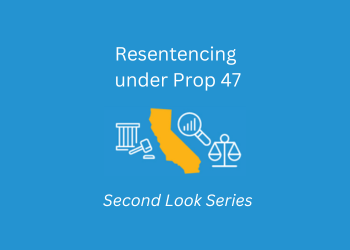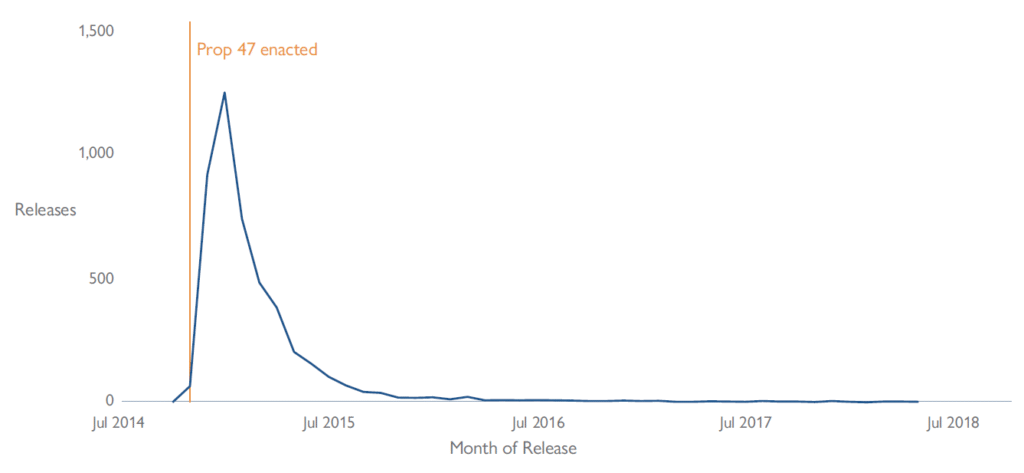- By:
- Category: Criminal justice

POLICY BRIEF: Resentencing under Proposition 47 (2014) ![]()
Note: This brief is part of the Second Look Research Series.
Before Proposition 47, California prosecutors had discretion to charge certain low-level drug possession and property theft offenses under $950 as either misdemeanors or as felonies. In response to growing concerns about incarceration rates, the cost of incarceration, and the long-term impact of felony convictions for lower-level offenses, voters passed Prop 47 in 2014. The measure reclassified specific drug and property offenses as misdemeanors, reducing associated penalties. It also allowed individuals already serving sentences in prison or county jail for those offenses to petition for resentencing.
This brief examines who was resentenced under Prop 47, the offenses for which they were originally convicted, and their recidivism rates following release. It focuses only on people who were serving a prison sentence at the time of resentencing, not people who were serving a jail sentence.
Second Look Research Series
The policy briefs focus on specific reforms:
Key Findings
1. More than 4,700 people in prison were resentenced under Prop 47, and half were in custody for a felony drug offense. Of the 4,723 people resentenced, 47% had a felony drug offense as their primary offense, 38% had a property offense, and 15% were incarcerated for a more serious offense, but had a subordinate property or drug offense resentenced — while their sentence for the more serious offense remained unchanged.
Monthly releases of individuals resentenced under Prop 47

Source: California Department of Corrections and Rehabilitation (2014–24).
2. People resentenced under Prop 47 often had multiple prior bookings and served short prison terms. Nearly 50% had three or more prior prison admissions, and almost half had been in prison for less than one year at the time of release.
3. Three years after release, 57% of people resentenced under Prop 47 were convicted of a new offense, and the majority of new convictions were for misdemeanors. That rate is higher than the 42% reconviction rate for everyone released from CDCR in fiscal year 2018–19. Most new convictions were for misdemeanors (38%) or non-violent, non-serious felonies (14%). Fewer than 5% had a first reconviction within three years for a serious or violent felony, and 8% had their first post-release prison admission for a serious or violent felony (these rates differ because a person’s first reconviction may be a less serious offense than the one that led to their first prison admission).
Background: This research is made possible through a partnership between the California Policy Lab at the University of California and the Committee on Revision of the Penal Code, a state agency that studies and makes recommendations to improve California’s criminal legal system.
Suggested Citation: Skog, A., Lacoe, J. (2025). Resentencing under Proposition 47 (2014). California Policy Lab, University of California. https://capolicylab.org/resentencing-under-proposition-47/
